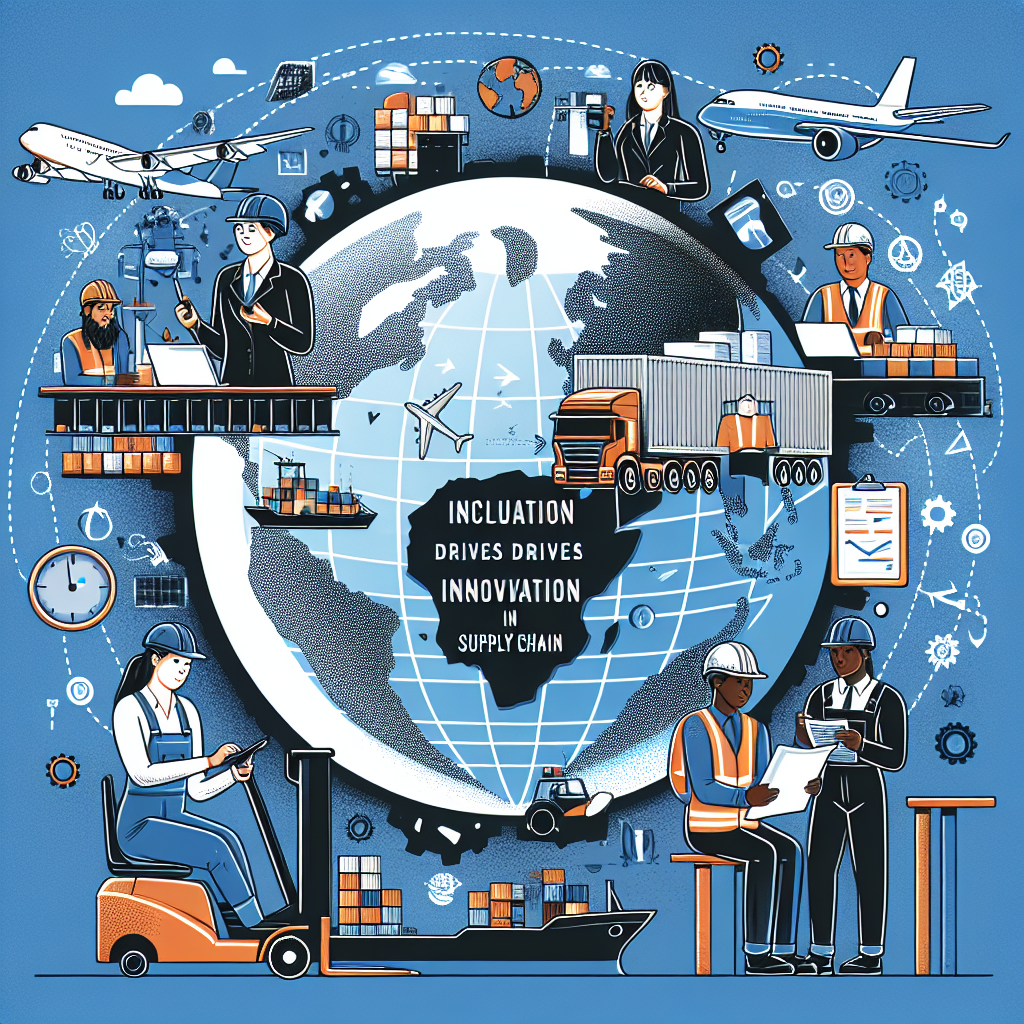Diversity in Logistics: Why Inclusion Drives Innovation in Supply Chain
In an increasingly complex and globalized marketplace, the logistics and supply chain sector has found itself at the crossroads of innovation and inclusivity. As the industry encounters unprecedented challenges—from fluctuating consumer demands to sustainability concerns and technological advancements—diversity has emerged as a vital asset in driving innovation and enhancing operational efficiency. This article explores why inclusion matters in logistics and how it contributes to transformative change across the supply chain.
Understanding Diversity in Logistics
Diversity in logistics encompasses a wide range of elements, including but not limited to, ethnicity, gender, age, sexual orientation, and varying abilities. When organizations cultivate a diverse workforce, they bring together a blend of perspectives, ideas, and experiences. In the logistics sector, where problem-solving is crucial, this variety can lead to more robust solutions and creative approaches to emerging challenges.
The Business Case for Inclusion
-
Enhanced Problem Solving: Diverse teams are known to outperform homogenous ones when it comes to problem-solving and decision-making. Different perspectives allow teams to approach challenges from multiple angles, leading to innovative strategies and solutions. For instance, a diverse team may be better equipped to assess risks associated with global supply chains, leading to more effective crisis management.
-
Improved Customer Understanding: The global nature of logistics means that supply chain professionals must cater to a diverse range of customers. A workforce that reflects the demographics of these customers is better positioned to understand their unique needs and preferences. This alignment fosters stronger customer relations, ultimately leading to increased brand loyalty and market share.
-
Attracting Top Talent: Companies that prioritize diversity and inclusion tend to attract a broader pool of talent. Millennial and Gen Z workers, in particular, prioritize inclusivity in corporate cultures. Organizations that actively promote an inclusive environment are more likely to appeal to these potential employees, giving them a competitive edge in staffing.
-
Enhanced Creativity and Innovation: According to research by McKinsey, companies in the top quartile for gender and ethnic diversity are 15% and 35% more likely to outperform their respective national industry medians. This correlation underscores the importance of diverse teams in fostering innovation—an essential element for navigating the complexities of logistics.
- Agility and Adaptability: In a rapidly changing environment, agility is key. Diverse teams tend to be more adaptable due to their varied experiences and perspectives. This adaptability allows organizations to pivot quickly in response to changing market conditions, whether it be disruptions caused by global events or shifts in consumer behavior.
Implementing Diversity and Inclusion Initiatives
To harness the benefits of diversity, logistics companies must take proactive steps toward inclusive practices. Here are several strategies that can help organizations embed diversity into their operational ethos:
-
Training and Development: Provide training programs that focus on unconscious bias, cultural competency, and inclusive leadership. Equipping leaders with the tools to foster a welcoming environment can significantly shift company culture.
-
Diverse Recruitment Practices: Expand recruitment channels to reach diverse candidates. This can include forging partnerships with organizations that support underrepresented groups or utilizing platforms that promote diversity in hiring.
-
Employee Resource Groups (ERGs): Foster the creation of ERGs that allow employees to connect based on shared characteristics or experiences. These groups can serve as platforms for discussing challenges, sharing resources, and driving initiatives that promote inclusivity.
-
Mentorship Programs: Establish mentorship and sponsorship programs that connect diverse employees with senior leaders. Providing guidance and support can help these individuals navigate their careers and develop into future leaders.
- Measurement and Accountability: Set diversity and inclusion goals and regularly measure progress. Transparency in these efforts can help hold organizations accountable and ensure continuous improvement.
Conclusion
Diversity is not just a checkbox to be checked; it is a crucial driver of innovation and business success in the logistics and supply chain sector. As the industry continues to evolve, organizations that embrace inclusive practices will be better equipped to face challenges and seize opportunities. In an era where customer expectations are rapidly changing and technology continually reshapes operations, the ability to innovate and adapt—fueled by diverse perspectives—will be the distinguishing factor that propels logistics companies into a successful future. By prioritizing inclusion, the logistics sector can not only enhance its performance but also become a model for other industries striving for a more diverse and equitable landscape.




